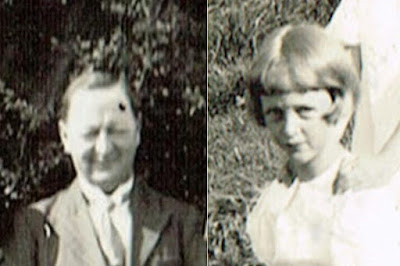Slowly and surely, this year has made its incremental progress toward this very date—December 31. We all knew it would eventually get here, of course, but for those of us consummate procrastinators, it seems not all minutes are created equal. The last fourteen hundred forty of those minutes seem to blast by at ten times the speed, all the while being weighted down with dozens of last-minute tasks yet to be done. The year 2016 will either go out with a bang...or a crash.
Right now, I have my last-minute mind fixated on one thing: getting the chance to complete one final sync of my online trees at Ancestry.com with my desktop-resident (and beleaguered) Family Tree Maker program. Yes, I know there has been word that, since new owner Software MacKiev has yet to deliver on a satisfactory final transition for their syncing function, there will be a momentary reprieve on pulling the plug at Ancestry. In the words of Software MacKiev's president Jack Minsky, in an email notice in late November, the sync system at Ancestry "will not stop working at the stroke of midnight this December 31st."
Uncertainty has a way of unsettling me. Since New Year's Eve falls on a weekend this year, I thought the prudent route would be to not be quite as procrastinate-y as usual, and do my final syncs one day early...you know, on a weekday...when staff are still at work, in case something goes sideways and I need to issue a
So yesterday, I started with my mother's tree, which I had already uploaded to my FTM program last December 31 (at the last minute, natch). I got everything set up, clicked the sync button and stood back.
Nothing exploded. In fact, it ran slower than the molasses we'll be keeping an eye on, come January. The green bars indicating progress morphed ever so slowly. I ended up walking away to attend to other tasks, returning every so often to check for messages.
Well, turns out I did get a message. And it wasn't one I wanted to see:
An error occurred while synchronizing this tree. You may want to restart FTM and try again later, but if this message recurs, you may need to unlink your trees and either upload a new linked tree from Family Tree Maker or download a new linked tree from Ancestry.
Really? I "may" want to? What other options are there?
Silly me; I didn't believe my eyes. I thought it might be faster to give things another try. I restarted FTM—just in case they really meant it—but this time, I selected a different tree. Using my mother in law's tree, I started the process up once again.
Same result.
That's when I went back and re-read the notice from Software MacKiev. Remember that part where they mentioned, at the end of the letter, about their still-to-be-completed upgrade? It's still in a beta version, so I had been quite willing to heed their warnings about not being in a hurry to download it. Somehow, this time, the rerun helped point me to a different part of the notice, where the writer posed the question, "Should you get the latest build right now?"
The answer provided me with a clue to my own situation right now: "If FTM is crashing or has slowed to a crawl with large trees..." the letter recommended switching to the newest build.
Funny, but I've never thought of my trees as large. I've known people whose trees contain individuals numbering into the tens of thousands. Granted, it won't be long, and I'll cross the threshold over the ten thousand mark, myself—but I never thought of that as a "large" tree. Just a very worked-on tree.
Apparently, nine-thousand-and-counting is still of a size to be considered "large," for not only did I get that error message for my mother's tree, but for my mother in law's tree, as well.
Wondering if that was the key, I tried syncing a few other trees I have, each of which number well under one thousand. The process moved along smoothly, and was accomplished in a matter of moments—even considering they were almost New Year's Eve moments.
So, that left me with the nuclear option: unlink my tree from Ancestry and try afresh.
Understand, that option comes with all sorts of red-lettered warnings. Enough to make a timid soul hesitate interminably. But I pressed the button, cringing in anticipation of the explosion surely to follow.
Nothing bad happened. I apparently now have a second nine-thousand-person tree resident on FTM that is linked to its current version on Ancestry. I can breathe a sigh of relief. And it's still 2016.
But not for long; there's another huge tree needing the same nuclear procedure. And a New Year just waiting for me to join in ringing it in.
























